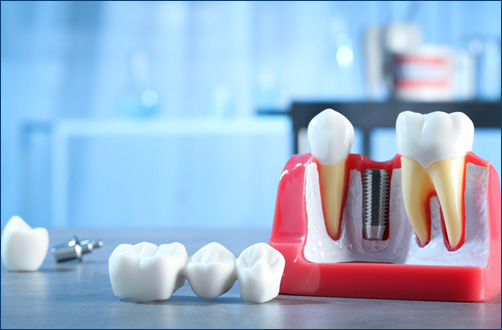Dental bridges are a common and effective solution for replacing missing teeth and restoring your smile. They work by bridging the gap left by one or more missing teeth, helping to improve both functionality and appearance. Here’s a comprehensive look at how dental bridges work and when they might be needed.
What is a Dental Bridge?
A dental bridge is a prosthetic device designed to fill the gap created by missing teeth. It consists of one or more artificial teeth, called pontics. Pontics are anchored in place by dental crowns on the adjacent natural teeth, known as abutments. Bridges can be made from various materials, including porcelain, ceramic, or metal. They are customized to match the color and shape of your natural teeth.
 How Do Dental Bridges Work?
How Do Dental Bridges Work?
-
- Consultation and Planning: The process begins with a consultation where your dentist will examine your oral health, discuss your needs, and create a treatment plan. X-rays or scans may be taken to assess the condition of your teeth and jawbone.
- Preparation of Abutment Teeth: If you have healthy teeth adjacent to the gap, they will be prepared to serve as abutments. This involves removing a small amount of enamel to allow space for the dental crowns that will support the bridge.
- Impressions and Temporary Bridge: Impressions of your teeth will be taken to create a custom bridge that fits perfectly. In the meantime, a temporary bridge may be placed to protect the prepared teeth and maintain appearance.
- Fabrication of the Bridge: The impressions are sent to a dental laboratory where the bridge is custom-crafted to fit your mouth. This process usually takes a few weeks.
- Placement and Adjustment: Once the permanent bridge is ready, it will be fitted and adjusted to ensure proper fit, bite, and comfort. The abutment crowns are cemented in place, and the pontic is securely attached to complete the bridge.
When Are Dental Bridges Needed?
Dental bridges are typically recommended in the following situations:
-
- Missing Teeth: Bridges are an ideal solution if you are missing one or more adjacent teeth. They help restore normal chewing and speaking functions and prevent remaining teeth from shifting out of alignment.
- Tooth Damage: If a tooth is severely damaged or compromised and cannot be repaired with other methods, a bridge can be used to replace it and restore function.
- Aesthetic Concerns: Bridges can enhance the appearance of your smile by filling gaps and creating a more uniform look.
Benefits and Considerations
Dental bridges offer several benefits, including improved function, appearance, and the prevention of further dental issues. They are durable and can last many years with proper care. However, maintaining good oral hygiene is crucial, as gum disease or decay in the abutment teeth can affect the longevity of the bridge.
Dental bridges are a practical and effective solution for replacing missing teeth, restoring your smile, and improving oral health. By understanding how bridges work and when they are needed, you can make informed decisions about your dental care. Consult with your dentist to explore whether a dental bridge is the right option for you and to ensure a successful outcome.

